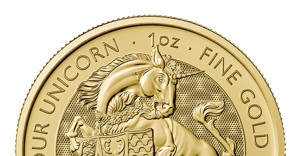Tavex uses cookies to ensure website functionality and improve your user experience. Collecting data from cookies helps us provide the best experience for you, keeps your account secure and allows us to personalise advert content. You can find out more in our cookie policy.
Please select what cookies you allow us to use
Cookies are small files of letters and digits downloaded and saved on your computer or another device (for instance, a mobile phone, a tablet) and saved in your browser while you visit a website. They can be used to track the pages you visit on the website, save the information you enter or remember your preferences such as language settings as long as you’re browsing the website.
| Cookie name | Cookie description | Cookie duration |
|---|---|---|
| tavex_cookie_consent | Stores cookie consent options selected | 60 weeks |
| tavex_customer | Tavex customer ID | 30 days |
| wp-wpml_current_language | Stores selected language | 1 day |
| AWSALB | AWS ALB sticky session cookie | 6 days |
| AWSALBCORS | AWS ALB sticky session cookie | 6 days |
| NO_CACHE | Used to disable page caching | 1 day |
| PHPSESSID | Identifier for PHP session | Session |
| latest_news | Helps to keep notifications relevant by storing the latest news shown | 29 days |
| latest_news_flash | Helps to keep notifications relevant by storing the latest news shown | 29 days |
| tavex_recently_viewed_products | List of recently viewed products | 1 day |
| tavex_compare_amount | Number of items in product comparison view | 1 day |
| Cookie name | Cookie description | Cookie duration |
|---|---|---|
| chart-widget-tab-*-*-* | Remembers last chart options (i.e currency, time period, etc) | 29 days |
| archive_layout | Stores selected product layout on category pages | 1 day |
| Cookie name | Cookie description | Cookie duration |
|---|---|---|
| cartstack.com-* | Used for tracking abandoned shopping carts | 1 year |
| _omappvp | Used by OptinMonster for determining new vs. returning visitors. Expires in 11 years | 11 years |
| _omappvs | Used by OptinMonster for determining when a new visitor becomes a returning visitor | Session |
| om* | Used by OptinMonster to track interactions with campaigns | Persistent |
| Cookie name | Cookie description | Cookie duration |
|---|---|---|
| _ga | Used to distinguish users | 2 years |
| _gid | Used to distinguish users | 24 hours |
| _ga_* | Used to persist session state | 2 years |
| _gac_* | Contains campaign related information | 90 days |
| _gat_gtag_* | Used to throttle request rate | 1 minute |
| _fbc | Facebook advertisement cookie | 2 years |
| _fbp | Facebook cookie for distinguishing unique users | 2 years |
The Difference Between a Troy Ounce and an Ounce

Exploring the distinctions between a troy ounce and an ounce is crucial for anyone involved in the trading or collection of precious metals. This article aims to demystify these terms and highlight their significance in various fields.
What is a Troy Ounce?

The troy ounce originates from the Roman monetary system and was further developed in Troyes, a medieval French city.
The troy ounce played a pivotal role in medieval trade, particularly in the weighing of precious metals.
Today, the troy ounce is the standard unit for measuring precious metals like gold and silver. This system has been adopted globally, including in the United States, for its precision and historical relevance in the trade of valuable materials.
What is an Avoirdupois ‘Ounce’?
In contrast, the avoirdupois ounce, more commonly known an ‘ounce’.
The Avoirdupois ounce is more commonly used for everyday items and non-precious materials
This system is prevalent in the United States for general goods and groceries, highlighting the practical division between everyday and precious item measurements.
Key Differences Between Troy Ounce and An Ounce

Some significant differences between a troy ounce and a standard ounce are the weight comparison and the different impact that have on trading and valuation.
- Weight Comparison: A troy ounce is significantly heavier, being approximately 10% more than a standard avoirdupois ounce. This difference amounts to a troy ounce weighing about 31.1 grams, compared to an avoirdupois ounce, which weighs about 28.35 grams.
- Impact on Trading and Valuation: This weight difference has profound implications in the trading and valuation when investing in precious metals. Precise understanding of these units is essential in precious metals markets, as pricing and weight calculations are based on the troy ounce standard. For investors, collectors, and traders, this distinction is key to accurate valuations and transactions, ensuring fairness and consistency in the market.
Misconceptions and Common Mistakes
A first common mistake is the fact these measurements have similar names but different measures. The troy ounce and the avoirdupois ounce share the term ‘ounce’, leading to confusion. It’s crucial to distinguish between them, especially in contexts where precision is key, such as in the trade of precious metals.
Misunderstanding these units can lead to significant errors in valuation and trading
For example, purchasing what is assumed to be an ounce of gold, when in fact it is a troy ounce, can result in a 10% discrepancy in expected weight and value.
It’s important for educational and training programs in relevant fields to emphasise the difference between these units. This knowledge is fundamental for professionals in sectors like jewellery making, and precious metal investing.
Key Takeaways
The distinction between a troy ounce and an avoirdupois ounce in the metric system is not just a trivial detail but a fundamental aspect of precious metals trading and valuation.
The troy ounce, with its rich history and specific weight, remains the standard in precious metals markets, while the avoirdupois ounce serves a more general purpose.
Understanding these differences is essential to avoid errors and ensure accuracy in transactions, making this knowledge indispensable for professionals in fields like jewellery making and metal investing.


















